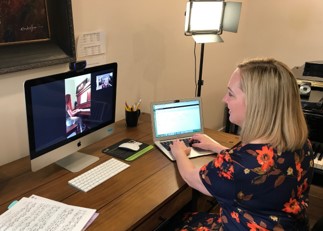
The Marking Breakdown
At the top of the report, you’ll see a marking breakdown that parallels the requirements chart for the respective level in your instrument’s RCM syllabus. The “Max” column displays the maximum possible mark for each requirement. The “Mark” column displays the actual marks awarded for each requirement. Taking a big-picture view of this marking breakdown can help you to plan the next steps for your students. Specifically, the marking breakdown can help you decide which aspects of their musical development could use more attention.
For example, perhaps the repertoire received strong marks, but the ear tests and sight reading did not. You could take this as an indication to spend some more time on these components or experiment with different approaches. Or maybe the ear tests and sight reading were strong, but the repertoire was weak. This feedback tells us that going forward, it could be beneficial to experiment with new ways to boost the artistic level and polish of the repertoire. For example, you may wish to try out different teaching approaches or help your student to experiment with different practice methods.
Starting with the big-picture overview will give us a good sense of the next steps to take with our students in terms of the larger areas: repertoire, technical requirements, and musicianship.
The Examiner’s Comments
Following the marking breakdown, you’ll find the examiner’s comments on each component of the exam. The examiner will point out aspects of the performance that went well, as well as those that could use improvement. Be sure to read this with your student to ensure the student understands everything and to answer any questions they may have. These comments will reinforce your teaching in two ways.
First, they will reinforce the things that your student has done well due to your teaching. It’s a great joy for teachers to see an examiner recognize a student’s phrasing, musicality, rhythm, and so on in a performance—especially when it was a challenge the teacher helped the student overcome.
Second, the comments will reinforce aspects of your student’s playing that have been a challenge or perhaps have not been considered. We’ve all had that student who didn’t quite observe a full quarter rest in a piece of music, no matter how many times we have pointed it out. Sometimes, hearing the same message from a second professional will convince students that we know what we’re talking about!
It will be helpful to distill the examiner’s comments into areas that can be improved in the future, such as phrasing, rhythm, meter, fluency, or other musical aspects.
The examiner’s report can help you to adjust your approach with your students as they work towards the next level. By focusing on the areas of weakness revealed in the report, you will be helping your students to develop their overall musicianship, leading to the lifelong enjoyment of music that is our ultimate goal.
Sign in or sign up to join the conversation.